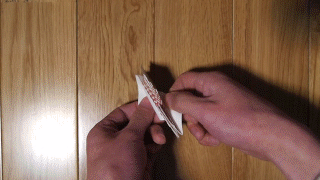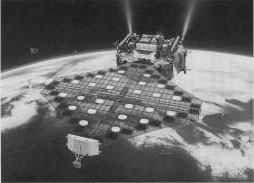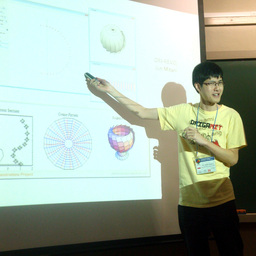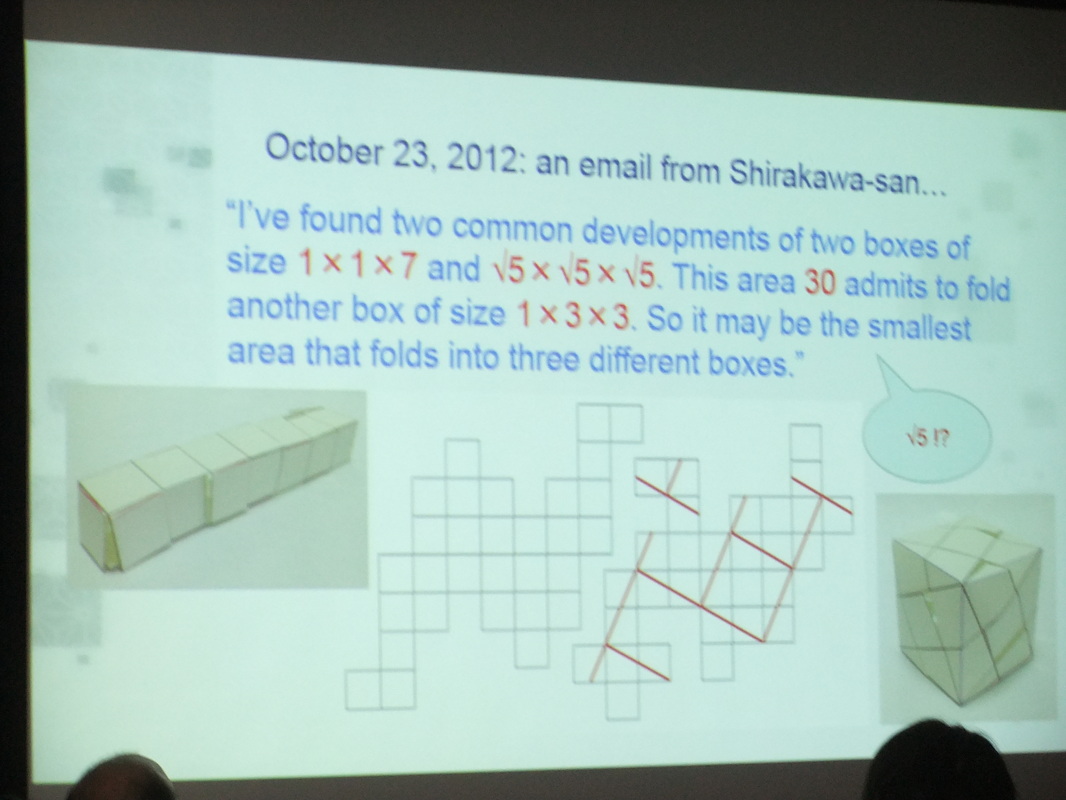|
Origami? Folding bits of paper? You mean that children's pastime? It can't possibly be of any "real" use, right? What if I told you that origami has been applied in space technology?
The 6th International Meeting on Origami in Science, Mathematics and Education (6OSME) was held in Tokyo University in August to help origami researchers, artists and educators share their ideas on the connections between origami and a wide range of other fields, including applications in theory and industry. The OSME conferences have really grown; this time there were 128 presentations spread over three days. In particular, industrial applications of origami and self-folding origami are blooming, and origami theory (e.g. rigid folding) is continuing to grow in breadth and depth. I presented my own research on the automated design of origami "towers" by stacking many "units" together using the origami technique of grafting. The final product can be folded with one sheet of paper.
Other LecturesOf the roughly 30 presentations I attended, here are some that particularly piqued my interest: Can a net of squares, glued together by their edges, fold into cuboid boxes? How many boxes can the same net fold into? "A Survey and Recent Results About Common Developments of Two or More Boxes" by Ryuhei Uehara Kuzuhara Koto, a blind instrumentalist and maestro who was also one of the earliest masters of traditional origami. His diary is our window to the origami of the past. "Origami Works that Kuzuhara Koto Brought Down to Us" by Masao Okamura Sometimes origami design programs churn out origami that self-penetrates, but we can fold that if we allow small cuts in the paper. "Self-Intersecting Origami with Cuts" by Jun Mitani An origami square twist made of rigid panels can be continuously flexed. Arrays of such twists can be stacked to form a curious block of material that either shrinks in all directions or expands in all directions (Metamaterial with a negative Possion's ratio). "The Metamaterial Generated from Rigid-origami Pattern" by Rui Peng and Yan Chen Origami research seems to be blossoming into something beautiful. Credit goes to the 6OSME organizing team for a wonderful conference. I'm looking forward to more intriguing developments in 7OSME, four years from now! Lesson StudyConference attendees had the opportunity to observe an origami math lesson at Otsuka Junior High School, taught by Mr. Sakamoto. The first part of the lesson was proving Haga's theorem, while the latter half was concerned with iterating Haga's theorem and trying to predict the fractions that result from the process. It was certainly intriguing to view the classroom from a third-person perspective, to see how the students reacted to the teaching (what sparked their curiosity? Were there difficulties?) and how the teacher led the class through the material. But I found it difficult to decide what to observe—which student(s) should I observe, and for how long? I also wished that the observers' discussion after the lesson had gone on longer; we might have been able to penetrate deeper into the core of the lesson critique. Still, it was an interesting and novel experience! My gratitude goes to, Mr. Sakamoto, Patsy Wang-Iverson the other teachers of Otsuka Junior High and students in that class for making that experience possible.
For more information about origami research in both theory and applications, check out my essay on origami research and applications.
1 Comment
|
Archives
December 2020
Categories
All
|
||||||||||||||||





 RSS Feed
RSS Feed